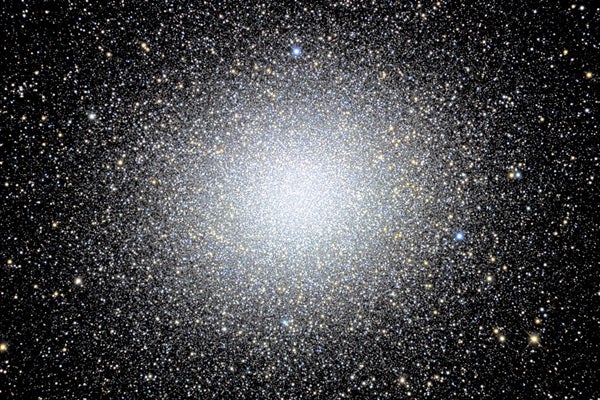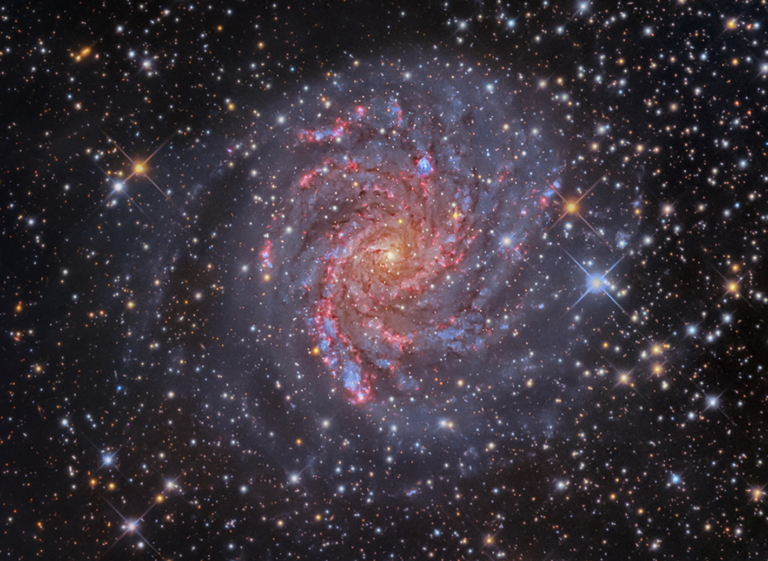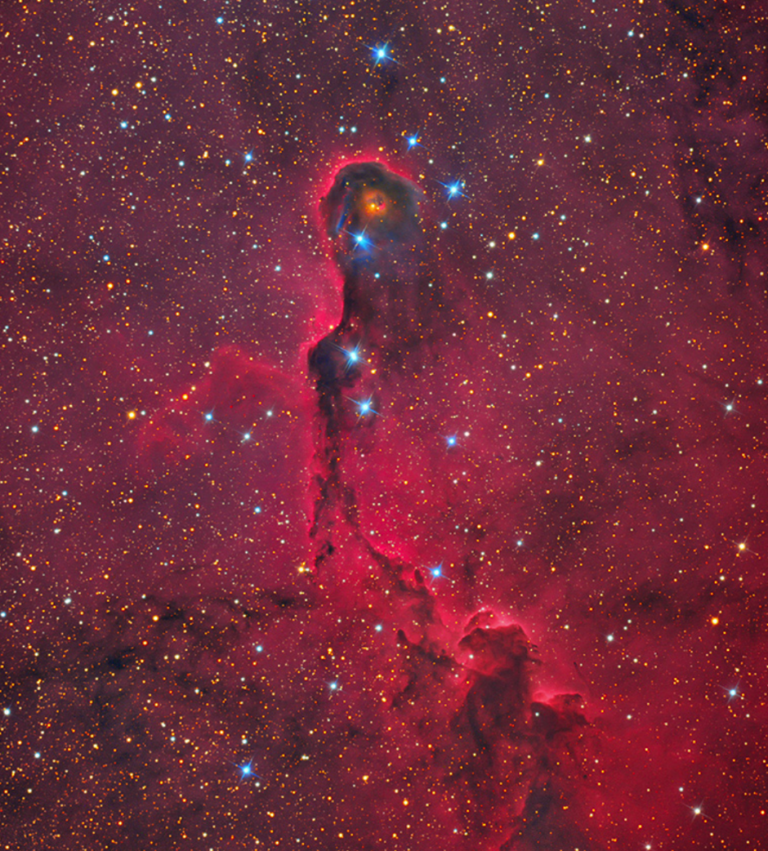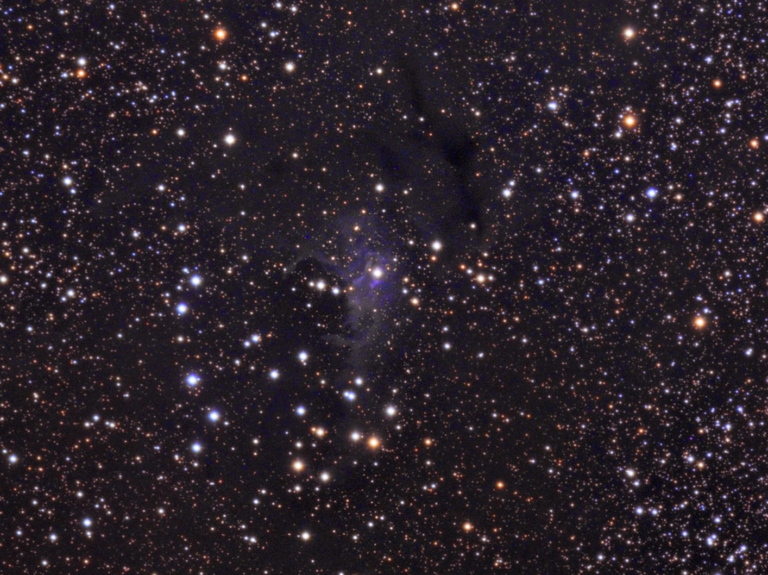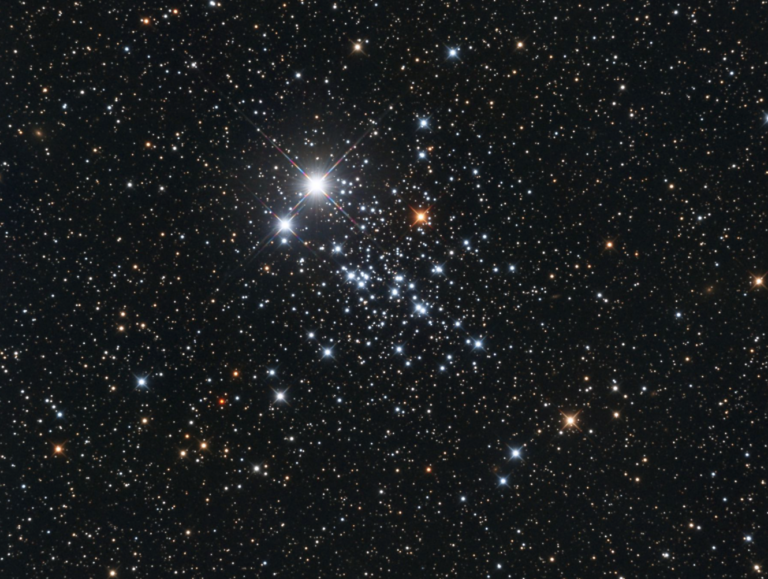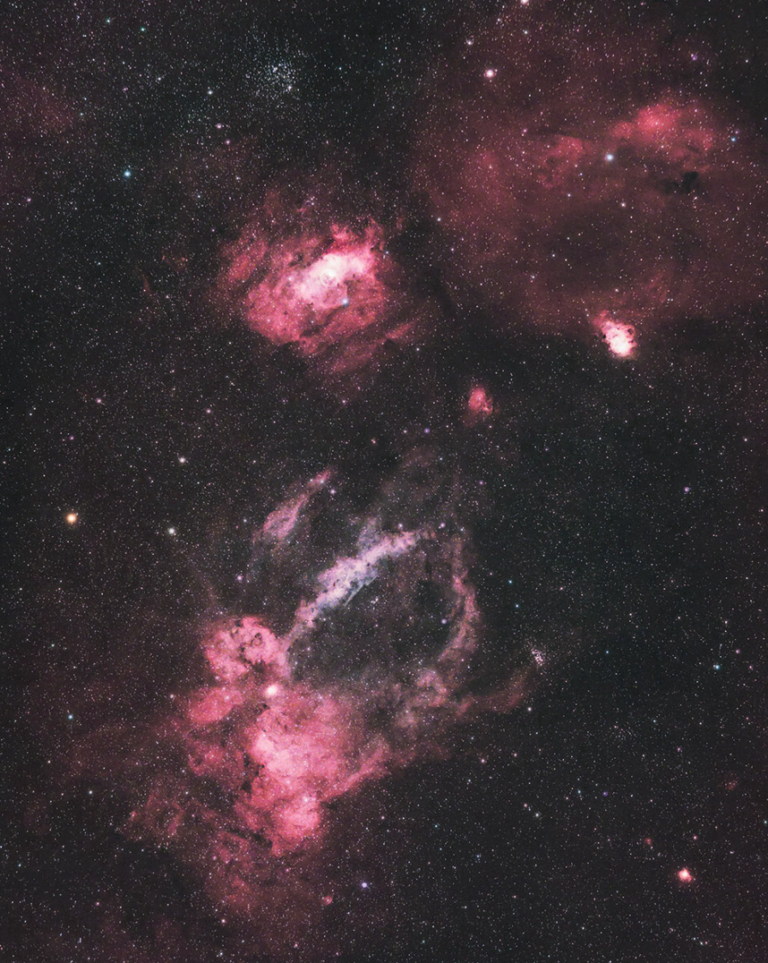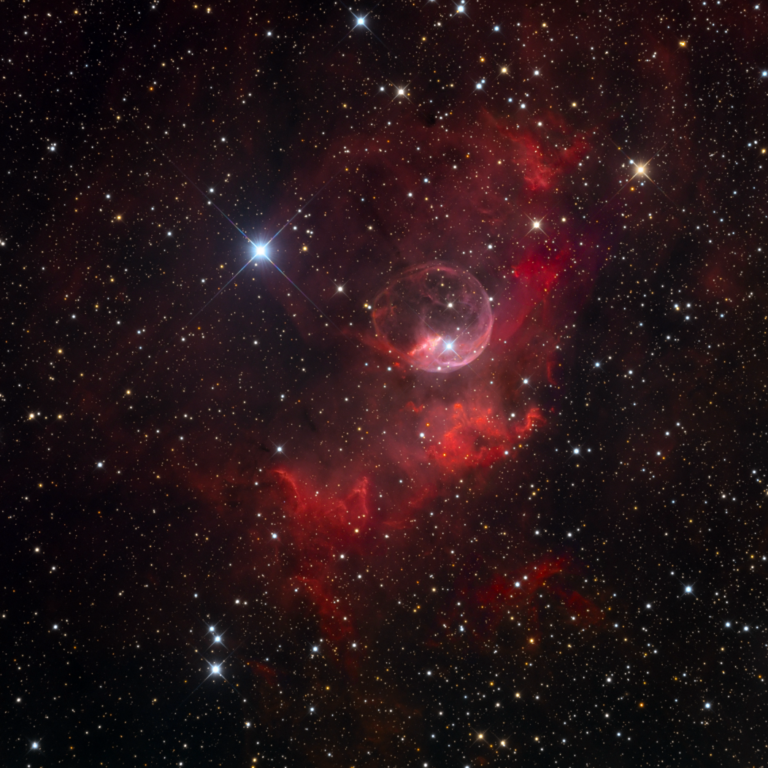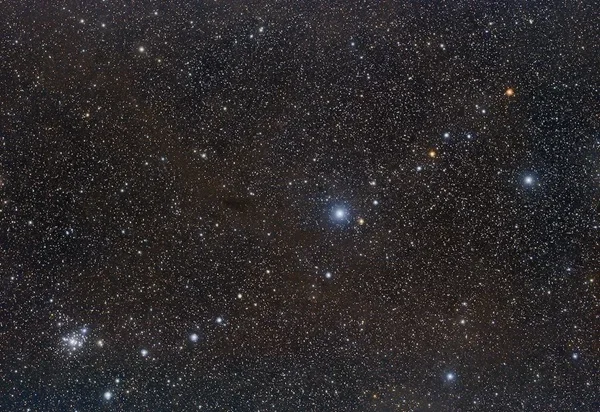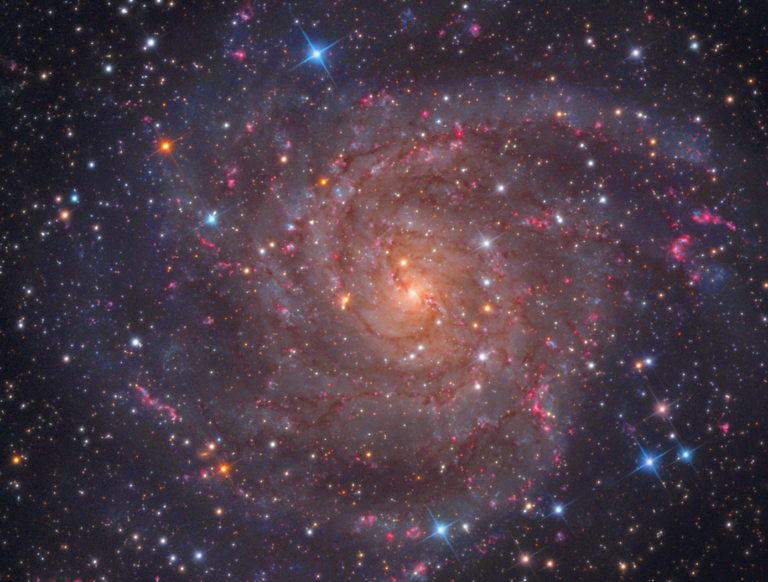The most glorious of all globular clusters is Omega Centauri. (NGC 5139 is its more mundane designation.) It’s the 24th-brightest “star” in Centaurus, which is the ninth largest of 88 constellations. It was noted in Ptolemy’s Almagest in A.D. 150 and designated Omega (ω) by Johann Bayer in his 1603 Uranometria. Edmond Halley is credited for first noting its non-stellar appearance in 1677. Scottish astronomer James Dunlop first described it as a globular cluster in 1826.
At –47° in declination, Omega Centauri is a challenge for observers at mid-northern latitudes. But it is bright enough at its apex of 6° above the horizon for observers to catch it from 38° north latitude.
For amateur astronomers located far enough south that the cluster is high in the sky, Omega Centauri makes the rest of the globulars look like pale imitations. Its apparent diameter is 36.3′ — larger than the Full Moon! It’s bright, too, at magnitude 3.9. Northern Hemisphere observers’ best and brightest globular is M13 (see #69): magnitude 5.9 and a mere 20′ in diameter.
Omega Centauri is resolvable in small telescopes, where other bright globular clusters look like fuzzy balls. A behemoth among the Milky Way’s swarm of globulars, it contains 10 million stars (with a total mass of 4 million Suns) crammed in an area 150 light-years in diameter. M13 is 600,000 solar masses by comparison. Omega Centauri is the second most massive globular cluster in the Local Group. Only M31’s Mayall II is heftier.
Imagine yourself as an astronomer near the core of this cluster, where the stars are only 0.1 light-year apart. Night would look like day. The relative motions of individual stars would be traceable over a few years. Such a sky sounds like the realm of science fiction.
Where does such a massive globular cluster come from? Astronomers believe Omega Centauri is all that’s left of a dwarf galaxy gobbled up by the Milky Way. Most of this galaxy has since been integrated into ours. Kapteyn’s Star, 13 light-years away, is likely one such former member.
Make sure to explore Astronomy’s full list of 101 cosmic objects you must see. New entries will be added each week throughout 2022.
To get the latest astronomical news and observing content delivered directly to your door, subscribe to Astronomy magazine today!

